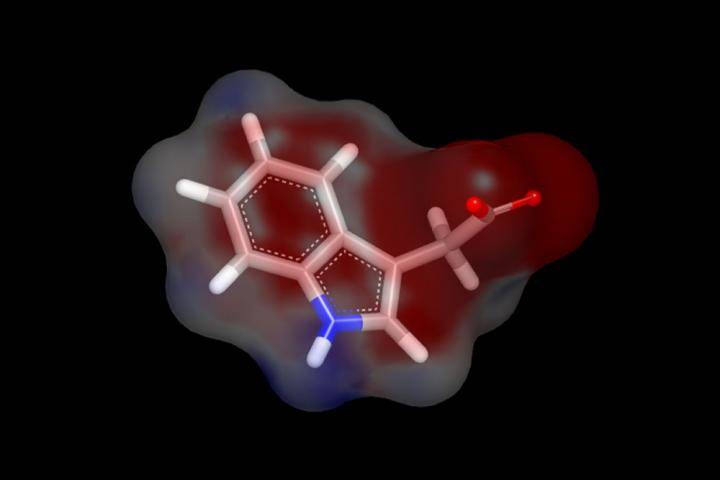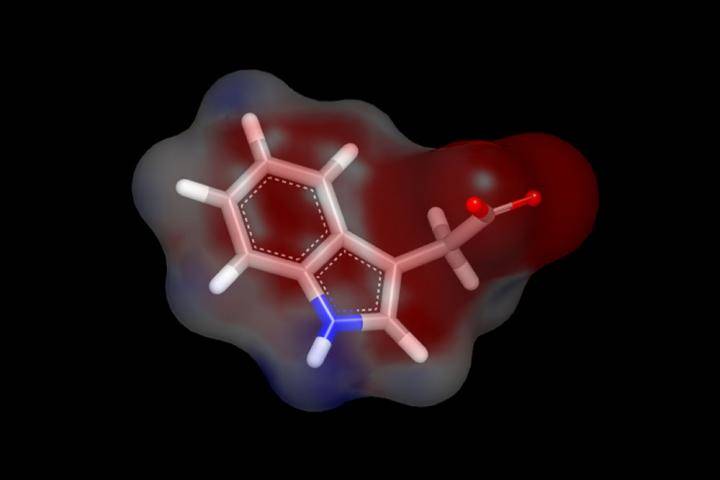
Credit: Source: Institute of Biology II/University of Freiburg
A team of researchers from the University of Freiburg have discovered how the plant hormone auxin is transported within the cell and how this signaling pathway helps to control gene expression in the nucleus. Auxin regulates many processes in plants: from embryonic development, to the development of organs, all the way to responses to changes in the environment. The team recently published its research in the journal Cell Reports.
According to current scientific models, auxin works with other proteins to fulfill its function. When auxin content in the nucleus rises, receptors bind in the presence of auxin repressors, initiate repressor degradation and enable auxin responsive transcription factors to trigger gene expression. Because it is believed that auxin content in the nucleus is important for this, the researchers focused on how auxin gets into the nucleus and how this process is controlled. The researchers from the University of Freiburg therefore collaborated with colleagues from Munich and Okayama, Japan, to test new, fluorescent, auxin-mimicking molecules in single cells. These molecules allowed them to visualize the accumulation of auxin in the cell without triggering any auxin-related processes. They were thus able to demonstrate that the auxin-mimicking molecules accumulated primarily in the endoplasmic reticulum (ER), which is a system of flat tubules that is a continuation of the nuclear membrane directly connected to the nucleus.
Next, the team studied how the ER, nucleus, and other cell parts work together to absorb auxin in the nucleus. Because there are currently no adequate methods of directly measuring the transport of auxin between the cell's different compartments, the researchers developed a combined experimental-theoretical approach that allows them to use a combination of microscopy, quantitative data analysis, and mathematical modeling to observe how individual plant cells react to different auxin levels. Based on the results of their research, they concluded that the flow of auxin from the ER to the nucleus represents an important signaling pathway within the cell to regulate auxin levels in the nucleus, and hence in supporting processes triggered by auxin.
###
The team of researchers includes Dr. Cristina Dal Bosco, Dr. Alexander Dovzhenko, and Prof. Dr. Klaus Palme, all from the Department of Molecular Plant Physiology of the Institute of Biology II, as well as Dr. Alistair Middleton and Prof. Dr. Christian Fleck, both from the Center for Biological Systems Analysis (ZBSA) at the University of Freiburg. Dr. Palme is also a member of the cluster of excellence BIOSS Centre for Biological Signalling Studies.
Original Publication:
Middleton, A. M., Dal Bosco, C, Chlap, P, Bensch, R., Harz, H., Ren, F., Bergmann, S., Wend, S., Weber, W., Hayashi, K., Zurbriggen, M.D., Uhl, R., Ronneberger, O., Palme, K., Fleck, C., Dovzhenko, A. (2018): Data-driven modeling of intracellular auxin fluxes indicates a dominant role of the ER in controlling nuclear auxin uptake. Cell Reports. http://www.cell.com/cell-reports/fulltext/S2211-1247(18)30269-9
Contact:
Prof. Dr. Klaus Palme
Institute of Biology II
University of Freiburg
Media Contact
Dr. Klaus Palme
[email protected]
49-761-203-2954
Original Source
https://www.pr.uni-freiburg.de/pm-en/press-releases-2018/signaling-pathways-to-the-nucleus?set_language=en





